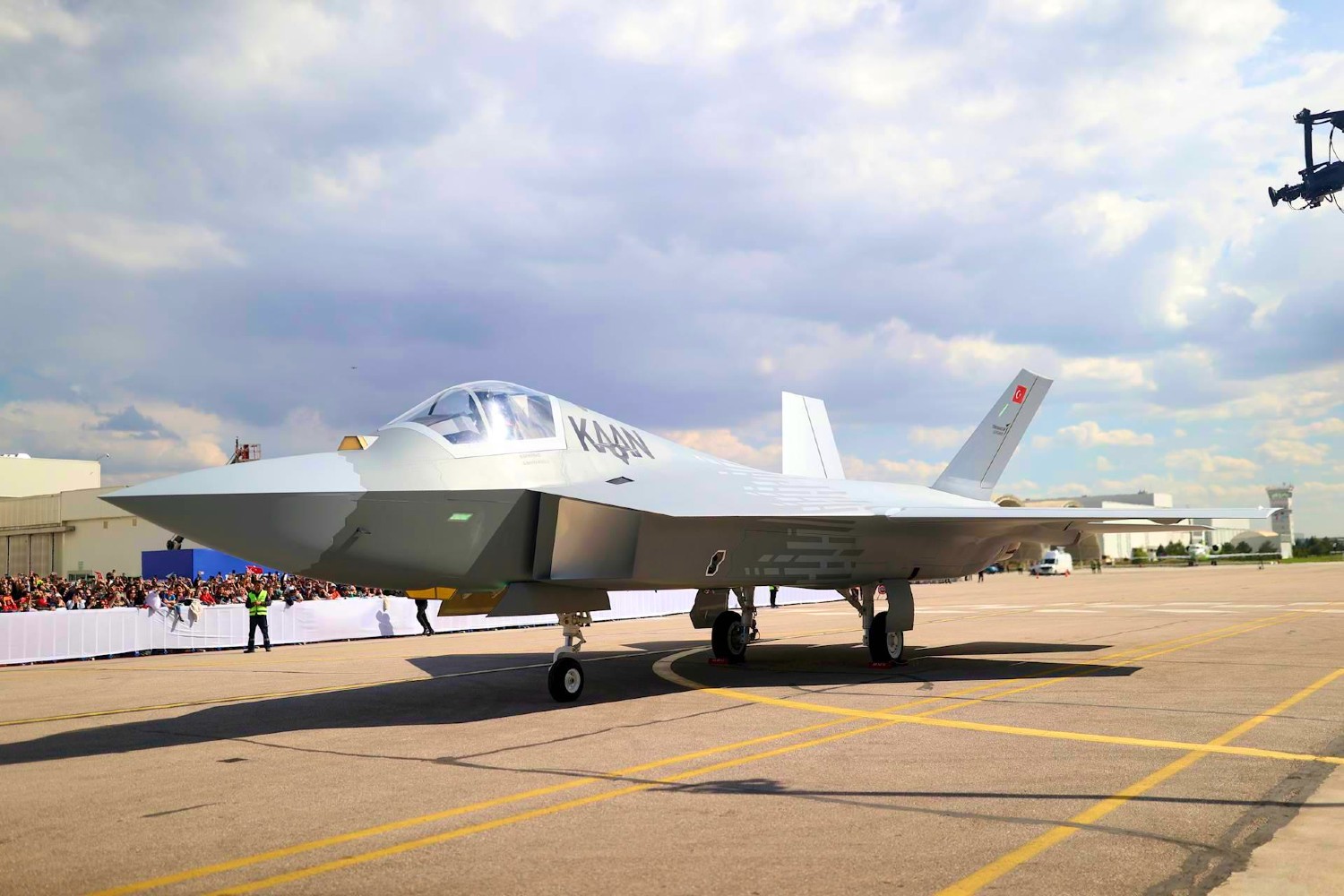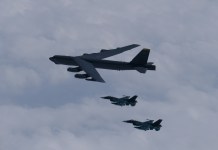Turkey has announced that its ambitious fifth-generation aircraft, KAAN, will be delivered to the Turkish Air Force by 2028. The aircraft completed its maiden flight in February and its second earlier this month.
Turkish Aerospace Industries’ general manager, Temel Kotil, announced recently that the company expected to deliver at least 20 KAAN fifth-generation aircraft by 2028. That news may not have been surprising, but the claims about the fighter jet’s capability have grabbed the headlines.
Speaking to a local publication, Turkiye Newspaper, during an event in Ankara, Kotil claimed, “This aircraft is better than the (US’s) F-35.”
“The F-35 carries six tons of ammunition; this one carries 10 tons. It has two engines compared to the F-35’s single engine. Having two engines means more energy and radars illuminating a greater distance,” he added. Kotil also spoke about short-term goals for the future: “We will deliver 20 KAAN aircraft in the year 2028. We’ll deliver many more between 2030 and 2033, and the Turkish fleet will comprise hundreds of KAAN aircraft.”
Underscoring the necessity for the national combat aircraft, or KAAN, to be 100% indigenous, he said, “We are also manufacturing the engine; we have to. Hopefully, by 2028-2029, we will fly KAAN with our engine. In such a crucial technology, we cannot be dependent on any other country.”
There is no credible backing to the claims about KAAN zooming ahead of the F-35 Lighting II in terms of capability. The comments have been viewed skeptically, especially due to the estrangement between Turkey and its NATO ally, the United States, over the F-35 fighter jet.
Notably, after Kotil’s claims were reported, pro-US military watchers hit back on social media, saying that the Lockheed Martin F-35 can also carry 6-10 tons of payload.
Going through an array of open discussions on social media in response to these claims, EurAsian Times discovered that military experts believe that since Turkey has an alternative, it may not require the F-35. However, that does not imply that the aircraft is superior or even close to the F-35, despite claiming better payload capacity.
Turkey was previously part of the F-35 Joint Strike Fighter consortium and engaged in developing parts for the fifth-generation stealth aircraft. However, it was expelled from the program in 2019 following its purchase of the Russian S-400 air defense system. The expulsion infuriated Turkish President Recep Erdogan, who then authorized the indigenous development of a fifth-generation aircraft to fill a key capability gap in its air force.
After dedicated work on the design and development of the aircraft for several years, the KAAN took its maiden flight in January 2024, paving the way for Turkey to become one of the few countries to develop a fifth-generation aircraft indigenously unlike most NATO countries that have bought the F-35 Lightning II from the US.
Earlier this year, there were reports that the US was trying to persuade Turkey to ditch the Russian S-400 air defense system and switch to an F-35 deal. However, with KAAN taking shape, the Turkish administration allegedly pulled the plug on those negotiations. Instead, it asked the US for compensation.
Turkish Foreign Minister Hakan Fidan told his US counterpart that Ankara has insisted on “compensation” for the F-35s. This was followed by Minister of National Defense Yasar Guler saying Turkey believes it “will be able to have the money returned (we) paid for the F-35s (and that) the negotiations are ongoing.”
The tussle between the Turkish KAAN and the US F-35 may not be new. Turkey has indicated that it would be looking to export the aircraft to friendly countries, and that could disrupt America’s foreign policy and jet sales.

Turkey’s KAAN Fighter Jet
The TF Kaan 5th Generation stealth twin-engine multi-role/air superiority fighter’s first flight was on February 21, 2024. The service introduction is planned for the early 2030s. TAI works with sub-contractor BAE Systems. The aircraft is meant to replace the Turkish F-16s and is also planned for exports.
Due to artificial intelligence (AI) and neural network assistance, the warplane could have enhanced fighting capabilities. It will be able to conduct air-to-air combat with next-generation weaponry and achieve precise hits from internal weapon racks at supersonic speed.
Although KAAN’s primary function is air superiority, it can also carry out ground attack missions. In the air-to-air role, the aircraft will be equipped with the Turkish Bozdoğan missile, the AIM-9X advanced short-range air-to-air missile (ASRAAM), the MBDA Meteor and MICA, Raytheon’s AIM-120 advanced medium-range air-to-air missile (AMRAAM), and the native Gökdoğan missile.
Though envisioned as an air-superiority fighter, some experts believe that the KAAN has evolved into a multi-role fighter, more on the lines of the F-35 Lightning II, a stealthy multi-role fighter.

The fighter plane will have a new reconnaissance pod for use in air-to-ground weaponry. The aircraft would only carry a 1,000-lb internal weapon load in low observability (LO) configuration. It will mainly use small precision-guided munitions (PGMs), such as Aselsan’s new Tolun, an INS/GPS-guided winged munition (GPS/INS is the use of GPS satellite signals to correct or calibrate a solution from an Inertial Navigation System ) with a 60-mile stand-off range.
Additionally, the aircraft will be capable of transporting the TÜBİTAK SAGE SOM-J cruise missile in compressed carriage. This missile was initially intended for internal carriage by the F-35A and features folding control surfaces and a booster.
The new TF Kaan will have enhanced propulsion and aerodynamics, an optimized combat radius, low radar cross-section, sensor fusion, advanced and internal multispectral sensors (EW and RF/IR), autonomy, supercruise, enhanced data link capabilities for network-enabled warfare, and high-precision stand-off weapons.
More importantly, Turkey has been building its own TF6000 and TF10000 jet engines, partly because of the expectation that Washington, given the complex US-Turkey ties, may veto the delivery of F110s for KAAN.
- Contact the author at sakshi.tiwari9555(at)gmail.com
- Follow EurAsian Times on Google News




